As workspaces evolve, one of the biggest challenges companies face is creating an office cubicle design that balance productivity, comfort, and collaboration. Traditional cubicles often feel confining and disconnected, leaving employees feeling disengaged and uninspired. In 2025, the focus is shifting toward designs that not only maximize space but also promote well-being, adaptability, and a sense of community.
Key Takeaways
- Modern office cubicles need to support various work styles, allowing for both focused work and collaboration through adjustable layouts.
- Eco-friendly materials like recycled metals and bamboo are central to 2025 office designs, reflecting a commitment to both the environment and employee well-being.
- Ergonomic furniture, along with smart technology features like built-in charging stations and adjustable lighting, enhances employee comfort and productivity.
This article explores the top design ideas that are redefining office cubicles in 2025, from incorporating smart technology to embracing eco-friendly materials and flexible layouts that cater to diverse work styles.
Key Design Principles for 2025
In 2025, several key design principles guide the transformation of office cubicles, prioritizing flexibility, sustainability, and aesthetics. Here are some ideas to implement this coming year:
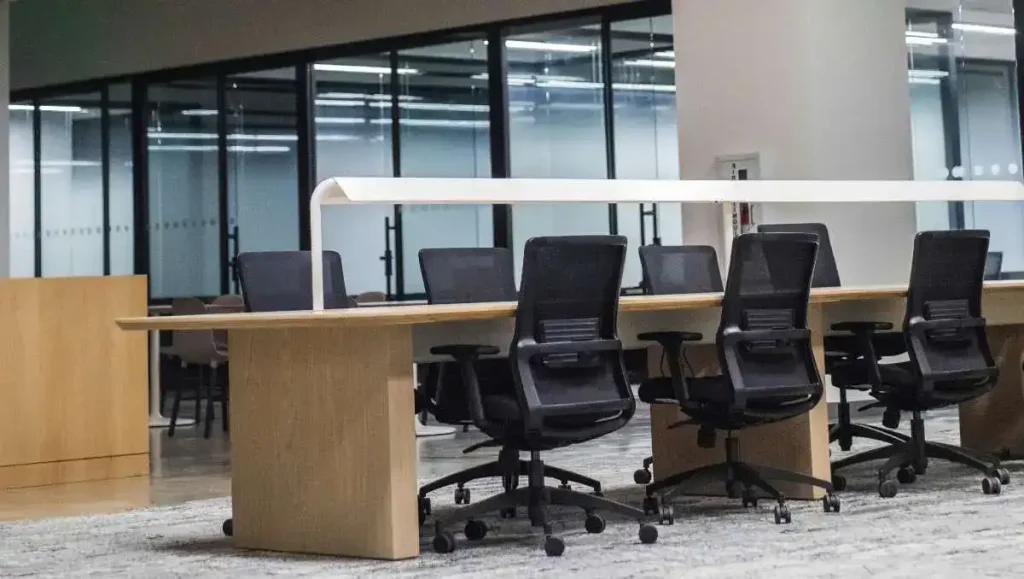
Flexibility and Adaptability
As companies increasingly support a hybrid work model and personalized work styles, cubicle designs must accommodate a range of needs. This includes the ability to adjust layouts for both solo and collaborative work, ensuring employees can seamlessly shift between focused tasks and team interactions.
Sustainability and Eco-Friendliness
Sustainability is a central focus in 2025’s office designs. Companies are increasingly aware of the environmental impact of their operations, and this extends to the design of office cubicles. Many organizations are choosing sustainable materials such as recycled metals, bamboo, and reclaimed dark wood to build their cubicle structures. According to OSHA’s white paper, the sustainability movement offers innovative ways to include worker safety and health, which are core elements of corporate responsibility.
Aesthetic Appeal and Branding
Aesthetic appeal in cubicle design goes beyond mere visual appeal; it reflects and reinforces a company’s brand and culture. Thoughtfully designed cubicles that align with the organization’s color scheme, logos, and overall branding can make employees feel more connected to their workplace and its mission.
Modern ergonomic chairs that blend seamlessly into your space while supporting better posture. See our modern ergonomic chairs collection today!
Top Design Ideas for Modern Office Cubicles
Modern office cubicles are evolving to meet the needs of a more dynamic and collaborative workforce. The focus is now on designs that enhance productivity, comfort, and flexibility while maintaining privacy. Here are some of the top design ideas for creating workspaces that inspire and support employees in 2025.
1. Biophilic Design Elements
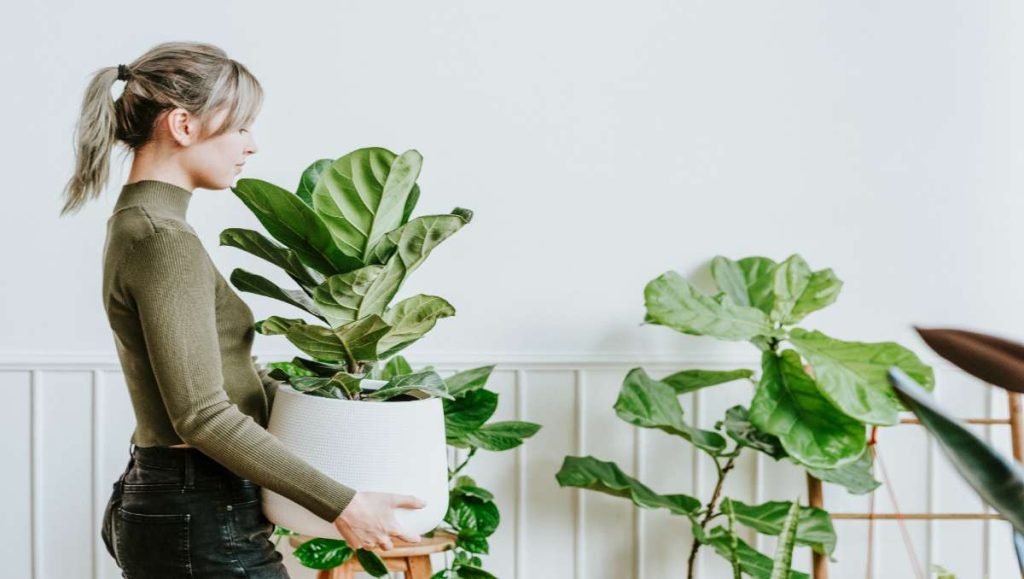
Incorporating natural lighting into office cubicle design offers significant benefits for both physical and mental well-being. Modern office cubicles can be strategically arranged near windows or designed with transparent or translucent dividers to allow natural light to flow more freely. With proper lighting design, companies can create a workspace that feels open and refreshing.
Adding plants and greenery within cubicles is also a powerful way to bring the calming, rejuvenating effects of nature indoors. Studies reveal that having indoor plants in the office can positively impact employees’ well-being by reducing stress and fostering a sense of tranquility. Additionally, greenery can improve air quality by filtering out toxins, creating a healthier workspace overall.
2. Open-Concept Workspaces
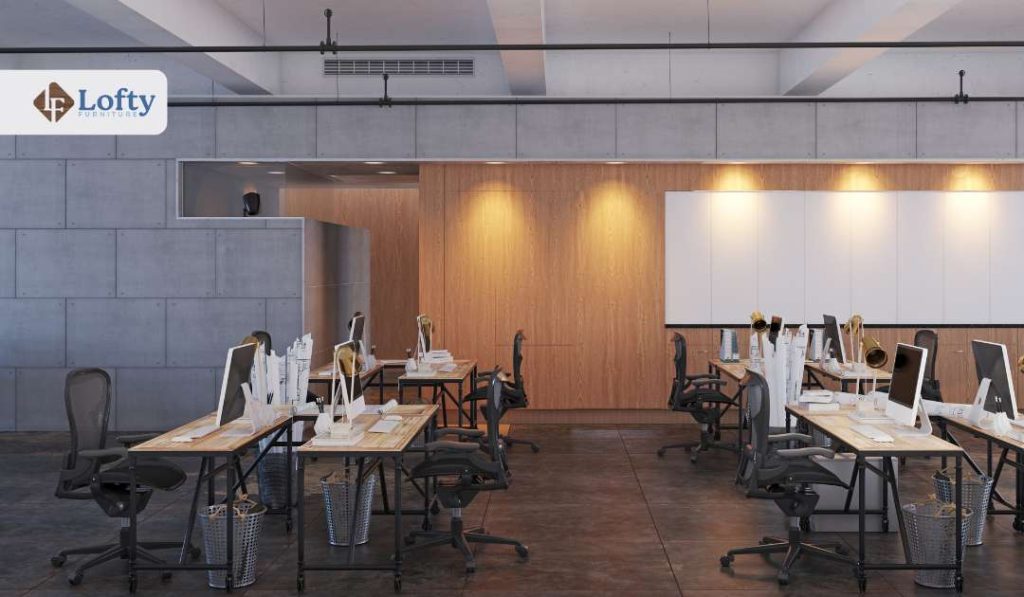
Open-concept cubicle designs will become increasingly popular in the years to come, offering a balanced approach that maintains some level of personal workspace while facilitating team interaction. This cubicle layout removes rigid, high-walled barriers, creating a more accessible environment where employees can easily connect and communicate.
Reducing physical barriers in cubicle design has a profound effect on creativity and innovation. When employees can see and engage with each other more freely, they are more likely to share ideas and seek feedback. Open spaces allow for brainstorming sessions and impromptu discussions, which can lead to innovative solutions and quicker decision-making.
According to Bre Hance, founder of InHanceDesignBuild:
“I’m a big believer in open, flowing spaces to make collaboration feel natural and inviting! When you design an office layout that’s open, you’re giving people permission to connect, chat, and share ideas without feeling boxed in. I love creating zones within these open spaces—maybe a cozy seating area with soft sofas for informal meetings, or a big communal table where people can gather around to brainstorm.”
3. Zig-Zag Configurations
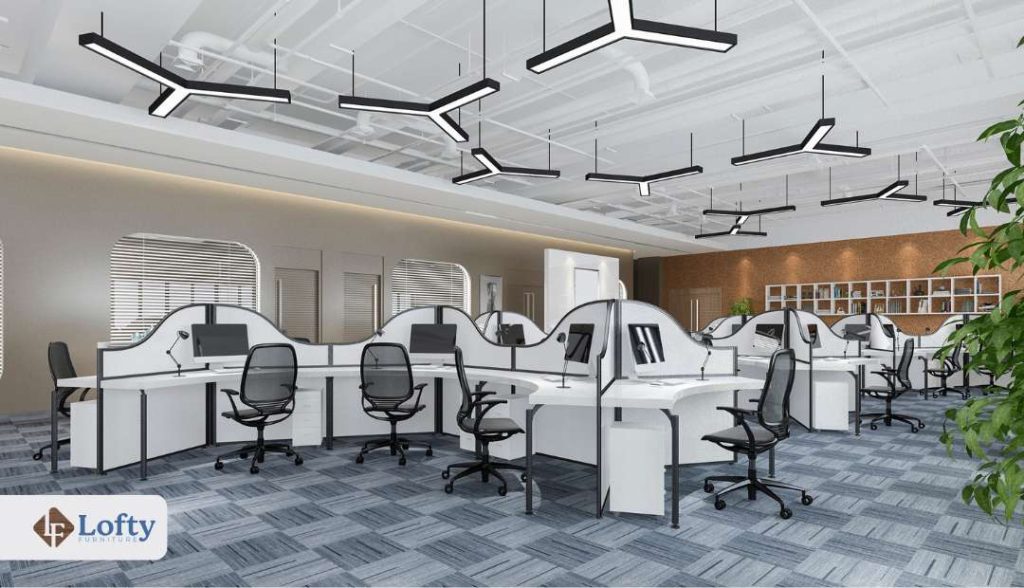
The zig-zag configuration is a creative office layout where cubicles or workstations are arranged in an alternating, angled pattern rather than a straight line. This design promotes a natural flow of movement through the workspace, encouraging employees to walk through different paths and engage with colleagues as they pass. The staggered layout also provides a degree of privacy for each individual workspace while still maintaining a sense of openness and accessibility.
A zig-zag configuration is also highly efficient in maximizing office space. By arranging cubicles at angles, this layout can often fit more workstations in the same area compared to traditional rows. It makes use of corner spaces and allows for the placement of additional small meeting areas or shared resources.
4. Curved Cubicles
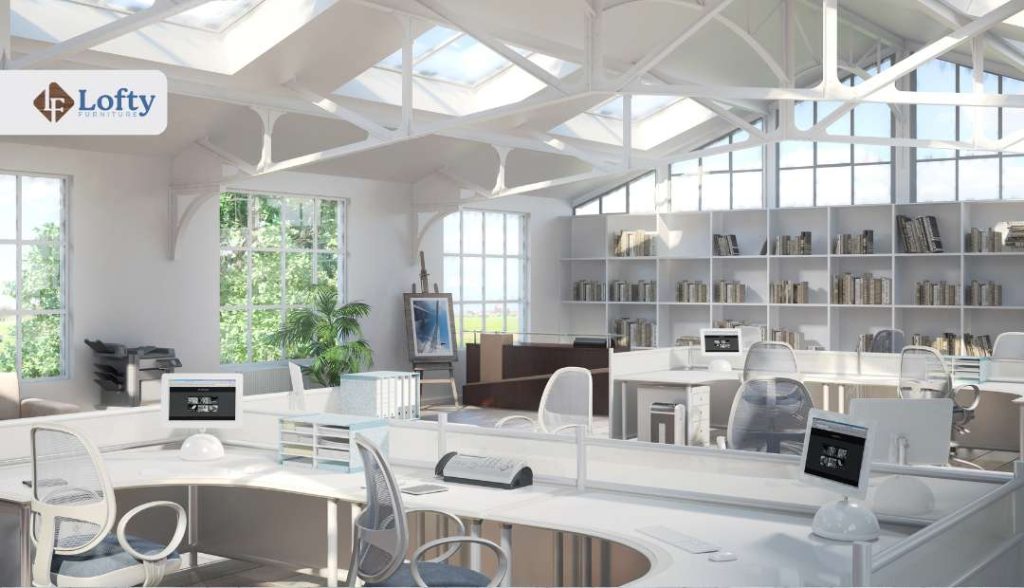
Curved cubicles feature rounded edges and soft lines, offering a more inviting and ergonomic alternative to traditional boxy designs. These cubicles improve office navigation by reducing sharp corners and creating a more fluid, open environment. Their softer design also helps create a warmer, less sterile atmosphere, making the workspace feel more welcoming.
5. Minimalist Aesthetics
Minimalist aesthetics prioritize simplicity, with clean lines and uncluttered spaces that promote a clear mind and focused work environment. An open, organized workspace creates a sense of calm, which can lead to reduced stress and improved focus, fostering an atmosphere that is conducive to efficient and mindful work. Minimalist cubicles often feature multi-functional office furniture trends and smart storage options that maintain simplicity without sacrificing utility. By ensuring each element has a purpose, minimalist cubicle designs create a streamlined workspace that supports both productivity and visual harmony.
Minimal Office. Maximum Efficiency.
Embrace simplicity with ergonomic file cabinets that keep your workspace clean, calm, and completely clutter-free. Shop now!
Here’s how to implement minimalist design principles in office cubicles.
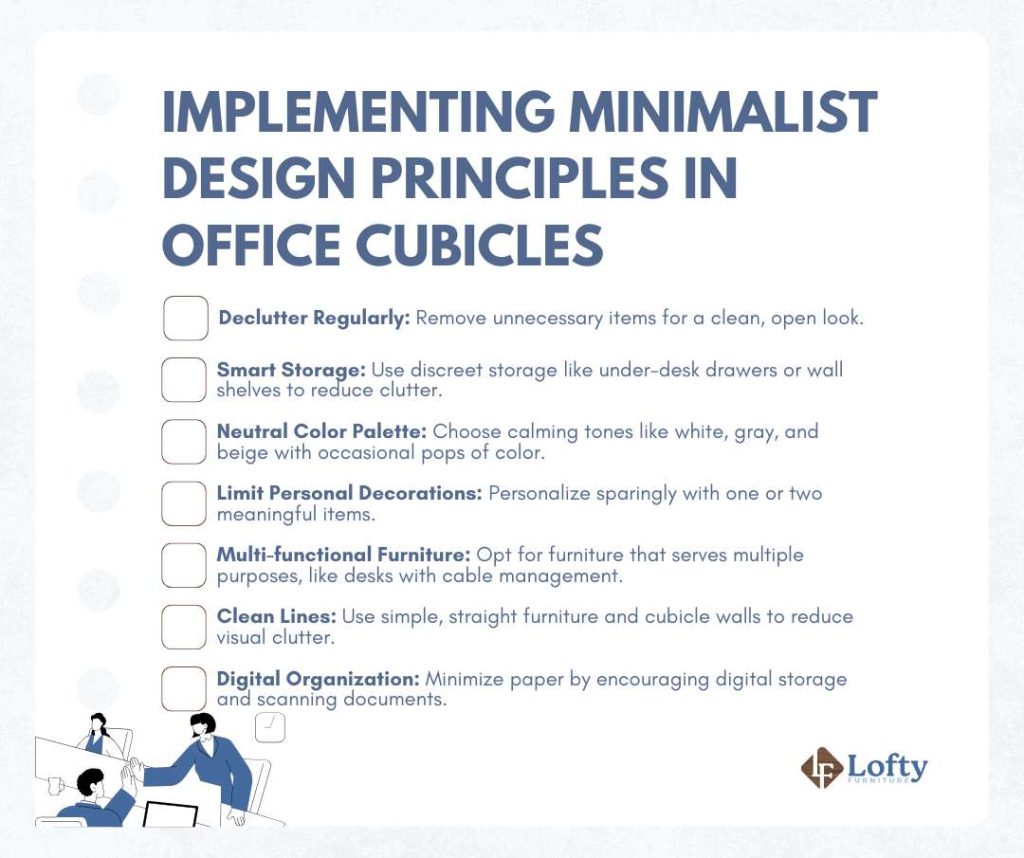
6. Ergonomic Features
Ergonomic furniture plays a crucial role in promoting health, comfort, and productivity. Proper ergonomic designs support natural posture, reduce physical strain, and prevent musculoskeletal issues, which are common in office settings due to prolonged sitting and repetitive tasks. Implementing ergonomic solutions in office cubicles involves choosing workplace furniture and tools, including ergonomic office accessories, that align with the natural movements and needs of employees. Key ergonomic features include:
- Adjustable Chairs: Ergonomic office chairs with adjustable seat height, lumbar support, and armrests promote proper posture.
- Sit-Stand Desks: Height-adjustable, standing desks allow employees to alternate between sitting and standing, reducing the negative health effects of prolonged sitting eight-adjustable, standing desks, also known as ergonomic stand-up desks, allow employees to al alternate between sitting and standing, reducing the negative health effects of prolonged sitting.
- Adjustable Keyboard Trays and Monitors: These help position screens and typing surfaces at optimal heights to reduce strain.
- Anti-Fatigue Mats, balance boards, and Footrests: These reduce pressure on the legs and lower back, ensuring comfort throughout the day.
- Ergonomic Lighting: Adjustable desk lighting helps reduce eye strain, especially during tasks requiring focused visual attention.
Ergonomic office chairs can be a great investment for your office cubicle design. Check out our selection of ergonomic chairs to find the perfect fit for your needs.
7. Technology Integration
Integrating technology into office cubicles transforms the traditional workspace into a smart, efficient environment. Essential tech features like built-in charging stations, wireless chargers, and cable management systems support seamless device use throughout the day, keeping employees connected and organized. Additionally, smart lighting systems that adjust based on natural light levels or are customizable to each employee’s preference can reduce eye strain, improve energy efficiency, and create a more comfortable working environment. Technology-driven cubicles allow employees to work without interruption, enhancing focus and productivity.
Conclusion
Designing modern office cubicles for 2025 involves balancing functionality, aesthetics, and technology to create a productive and enjoyable work environment. By implementing key design principles—such as flexibility, sustainability, ergonomic support, and tech integration—companies can develop workspaces that support employee health, collaboration, and satisfaction. Modern cubicles are no longer just spaces to sit and work; they’re essential elements that shape the workplace experience, improve productivity, and reflect a company’s culture and values.
FAQs
How can companies ensure their cubicle designs are ergonomic?
Companies can ensure ergonomic cubicle designs by selecting furniture that is adjustable to each employee’s needs, such as height-adjustable chairs and office desks, monitor stands, and supportive footrests.
What role does technology play in modern office cubicle design?
Technology is integral to modern office cubicle design, enhancing convenience, connectivity, and collaboration. Features like built-in charging stations, smart lighting, and high-speed internet connectivity enable employees to work seamlessly.
How can personalization in cubicles impact employee morale?
Allowing employees to personalize their cubicles can have a positive impact on morale by helping them feel more connected to their workspace. Personalized elements, such as family photos, plants, or decor items, provide comfort and a sense of ownership, which can boost motivation and well-being.
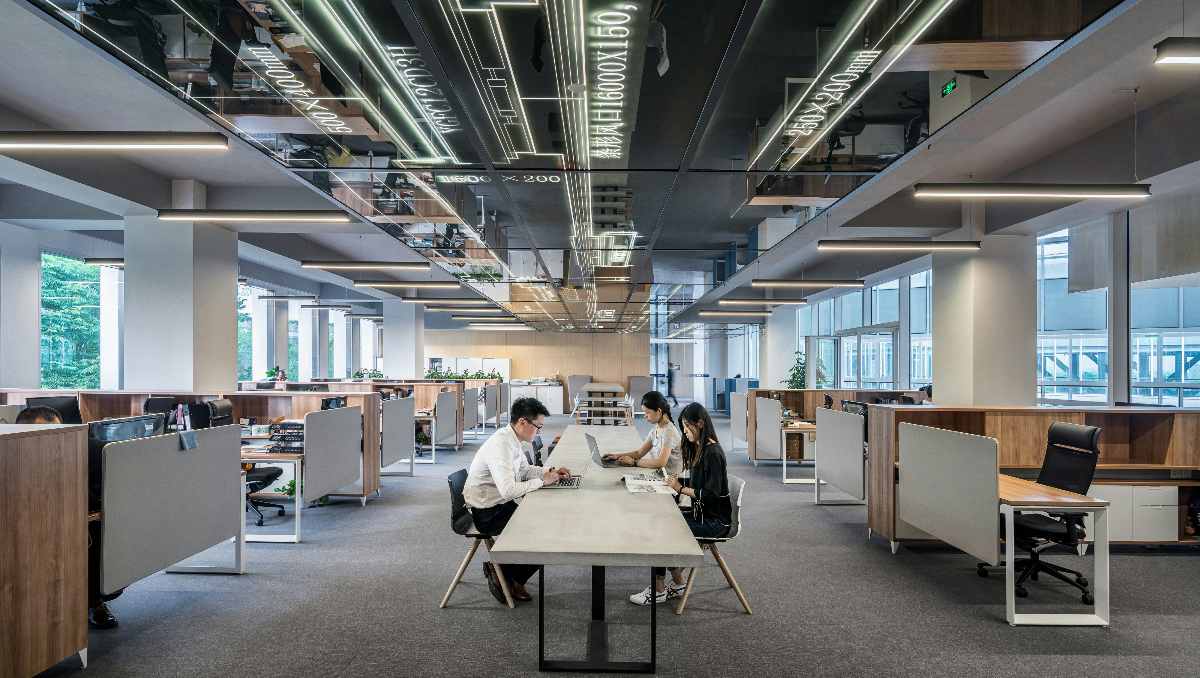
Your article “Top Design Ideas for Modern Office Cubicles in 2025” is engaging, informative, and inspiring offering fresh, stylish, and smart workspace transformation ideas!